Ditapis dengan
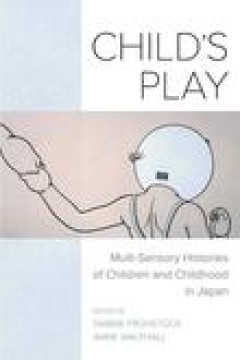
Child’s play :multi-sensory histories of children and childhood in Japan
Few things make Japanese adults feel quite as anxious today as the phenomenon called the “child crisis.” Various media teem with intense debates about bullying in schools, child poverty, child suicides, violent crimes committed by children, the rise of socially withdrawn youngsters, and forceful moves by the government to introduce a more conservative educational curriculum. These issues ha…
- Edisi
- -
- ISBN/ISSN
- 9780520968844
- Deskripsi Fisik
- X, 302 p.
- Judul Seri
- -
- No. Panggil
- 305.230952 WAT c
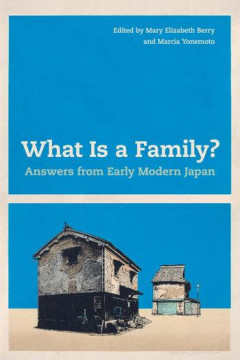
What is a family? :answers from early modern Japan
What is a family? The essays gathered here explore disparate family histories in early modern Japan, attending variously to the samurai elite, agrarian villagers, urban merchants, communities of outcastes, and the circles surrounding priests, artists, and scholars. They draw on diverse sources—from population registers and legal documents to personal letters and diaries, from genealogies and …
- Edisi
- -
- ISBN/ISSN
- 9780520316089
- Deskripsi Fisik
- x, 275p. : ill.
- Judul Seri
- -
- No. Panggil
- 306.850952 WHA w

Transnational entrepreneurship in South East Asia :Japanese self-initiated ex…
This open access book brings together narratives of inbound and outbound expatriate entrepreneurship in Japan to provide a comprehensive overview of international entrepreneurship in the region. Through in-depth interviews with expatriate entrepreneurs, policymakers, and additional stakeholders it provides the reader with a solid understanding of the current landscape of international entrepren…
- Edisi
- -
- ISBN/ISSN
- 9789813292529
- Deskripsi Fisik
- xxi, 220p. : ill.
- Judul Seri
- -
- No. Panggil
- 338.04 YOK t
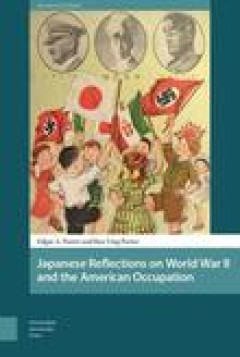
Japanese reflections on World War II and the American occupation
This book presents an unforgettable up-close account of the effects of World War II and the subsequent American occupation on Oita prefecture, through firsthand accounts from more than forty Japanese men and women who lived there. The interviewees include students, housewives, nurses, midwives, teachers, journalists, soldiers, sailors, Kamikaze pilots, and munitions factory workers. Their stori…
- Edisi
- -
- ISBN/ISSN
- 9789462982598
- Deskripsi Fisik
- 238 p.
- Judul Seri
- -
- No. Panggil
- 940.548252 POR j

The culture of capital punishment in Japan
This open access book provides a comparative perspective on capital punishment in Japan and the United States. Alongside the US, Japan is one of only a few developed democracies in the world which retains capital punishment and continues to carry out executions on a regular basis. There are some similarities between the two systems of capital punishment but there are also many striking differen…
- Edisi
- -
- ISBN/ISSN
- 9783030320867
- Deskripsi Fisik
- XV, 125 p.
- Judul Seri
- -
- No. Panggil
- 364.660952 JOH c
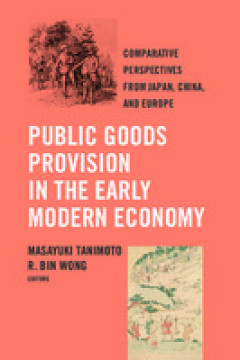
Public goods provision in the early modern economy :comparative perspectives …
Historically, for sustaining and reproducing their economic lives, people have obtained goods and services through various ways. How did people tackle issues that the market did not handle well? This volume compares early modern efforts to provide “public goods”—defined in contraposition to market-mediated goods and goods provided through personal relations, such as kinship ties. We exami…
- Edisi
- -
- ISBN/ISSN
- 9780520972797
- Deskripsi Fisik
- XIII, 313 p.
- Judul Seri
- -
- No. Panggil
- 330.903 PUB p

Testing the margins of leisure :case studies on China, Japan, and Indonesia
This volume offers eight studies on different historical and present-day aspects of leisure in Asia. It critically engages with the predominant Eurocentric focus of leisure studies, bringing into the discussion a number of crucial issues such as the role of leisure as a transcultural contact zone. The volume engages with a field that has been rapidly growing due to the heightened role of leisur…
- Edisi
- -
- ISBN/ISSN
- 9783947732753
- Deskripsi Fisik
- VI, 310 p.
- Judul Seri
- -
- No. Panggil
- 306 TES t

Child’s play multi-sensory histories of children and childhood in Japan
Few things make Japanese adults feel quite as anxious today as the phenomenon called the “child crisis.” Various media teem with intense debates about bullying in schools, child poverty, child suicides, violent crimes committed by children, the rise of socially withdrawn youngsters, and forceful moves by the government to introduce a more conservative educational curriculum. These issues ha…
- Edisi
- -
- ISBN/ISSN
- 9780520968844
- Deskripsi Fisik
- 314 p.; 22 cm.
- Judul Seri
- -
- No. Panggil
- 305.230952 CHI c
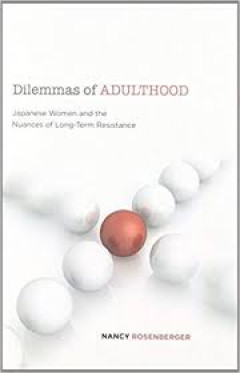
Dilemmas of adulthood:Japanese women and the nuances of long-term resistance
In Dilemmas of Adulthood, Nancy Rosenberger investigates resistance in a longitudinal study of more than fifty Japanese women over two decades. The women represent a generation straddling the roles of post-war modernity and the possibilities of late modernity. By exploring the challenges these modern Japanese women pose to cultural codes, Rosenberger's work speaks to broader questions about how…
- Edisi
- -
- ISBN/ISSN
- 9780824838874
- Deskripsi Fisik
- -
- Judul Seri
- -
- No. Panggil
- 305.40952 ROS d
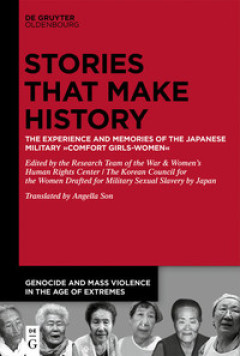
Stories that make history :the experience and memories of the Japanese milita…
What would it be like if your existence was erased for half a century? This is the reality for the Korean comfort girls-women whose lives had been erased since the time of the expansion of comfort stations by the Japanese military in 1937. This book is an effort to bring these women back to life and to make their voices, experiences and memories available to future generations. The experiences …
- Edisi
- -
- ISBN/ISSN
- 9783110670523
- Deskripsi Fisik
- XXX, 304 p.
- Judul Seri
- -
- No. Panggil
- 952 STO s
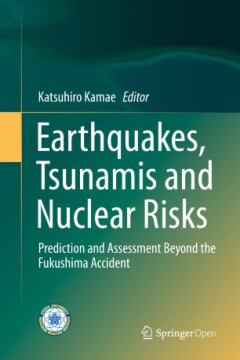
Earthquakes, tsunamis and nuclear risks :prediction and assessment beyond the…
This book covers seismic probabilistic risk assessment (S-PRA) and related studies which have become more important to increase the safety of nuclear facilities against earthquakes and tsunamis in the face of the many uncertainties after the Fukushima accident. The topics are (1) Active faults and active tectonics important for seismic hazard assessment of nuclear facilities,(2) Seismic source …
- Edisi
- -
- ISBN/ISSN
- 9784431558224
- Deskripsi Fisik
- xii, 177p. : ill.
- Judul Seri
- -
- No. Panggil
- 621.4835 EAR e
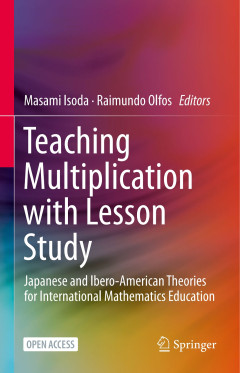
Teaching multiplication with lesson study :Japanese and Ibero-American theori…
This open access book is intended to assist teachers, teacher trainers, curriculum designers, editors and authors of textbooks in developing strategies to teach the multiplication of natural numbers based on the experience of the Lesson Study in Japan. This approach to mathematics education dates back to the 1870s and reconciles the emphasis on problem solving with the treatment of the curricul…
- Edisi
- -
- ISBN/ISSN
- 9783030285616
- Deskripsi Fisik
- xviii, 296p. : ill.
- Judul Seri
- -
- No. Panggil
- 510.71 TEA t
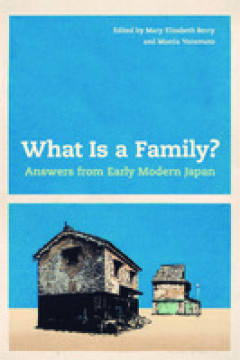
What is a family?:answers from early modern Japah
What is a family? The essays gathered here explore disparate family histories in early modern Japan, attending variously to the samurai elite, agrarian villagers, urban merchants, communities of out castes, and the circles surrounding priests, artists, and scholars. They draw on diverse sources—from population registers and legal documents to personal letters and diaries, from genealogies and…
- Edisi
- -
- ISBN/ISSN
- 9780520974135
- Deskripsi Fisik
- x, 291 hlm.
- Judul Seri
- -
- No. Panggil
- 306.850952 WHA w

Beyond the limits to growth:new ideas for sustainability from Japan
At a time when contemporary challenges seem to many to be insurmountable, this book offers an optimistic view of the future and provides a road map for societies to get there. Drawing upon extensive research and many years as a thought leader in environmental and sustainability issues in Japan and internationally, Hiroshi Komiyama analyzes the most pressing challenges to the attainment of susta…
- Edisi
- -
- ISBN/ISSN
- 9784431545590
- Deskripsi Fisik
- 1 electronic resource (xxix, 103 pages )
- Judul Seri
- -
- No. Panggil
- 338.95207 KOM b

The Japanese automotive industry:model and challenge for the future?
As the University of Michigan Center for Japanese Studies reflected on the deteriorating position of the domestic auto industry in the fall of 1980, and the strong competitive threat being posed by the Japanese automakers, we were struck by the extraordinary low quality of the public discussion of these critical issues. The national importance of the issues seemed only matched by the superficia…
- Edisi
- -
- ISBN/ISSN
- 9780472902033
- Deskripsi Fisik
- ix, 147 p. ; 23 cm.
- Judul Seri
- -
- No. Panggil
- 338.4762920952 JAP j
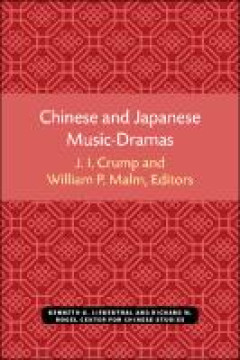
Chinese and Japanese music-dramas
Chinese and Japanese Music-Dramas is the result of a conference on the relations between Chinese and Japanese music-drama held at the University of Michigan, Ann Arbor, on October 1–4, 1971. In addition to the Association for Asian Studies, four U-M departments participated in the conference: the Center for Japanese Studies, the Center for Chinese Studies, the School of Music, and the Speech …
- Edisi
- -
- ISBN/ISSN
- 9780472901371
- Deskripsi Fisik
- VIII, 255 p.
- Judul Seri
- -
- No. Panggil
- 782.10951 CHI c
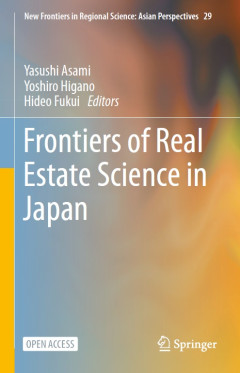
Frontiers of real estate science in Japan
This Open Access book presents recent research and hot topics in the field of real estate science in Japan. It features carefully selected English translations of peer-reviewed papers and excellent articles published in the Japanese Journal of Real Estate Sciences, as well as papers presented at the Japan Association of Real Estate Sciences (JARES) annual conference. The topics covered incl…
- Edisi
- -
- ISBN/ISSN
- 9789811588488
- Deskripsi Fisik
- ix, 337p. : ill.
- Judul Seri
- -
- No. Panggil
- 346.52043 FRO f

Imperial genus :the formation and limits of the human in modern Korea and Japan
"Imperial Genus begins with the turn to world culture and ideas of the generally human in Japan’s cultural policy in Korea in 1919. How were concepts of the human’s genus‑being operative in the discourses of the Japanese empire? How did they inform the imagination and representation of modernity in colonial Korea? Travis Workman delves into these questions through texts in philosophy, lit…
- Edisi
- -
- ISBN/ISSN
- 9780520964198
- Deskripsi Fisik
- vii, 307 p. : ill,
- Judul Seri
- -
- No. Panggil
- 951.903 WOR i
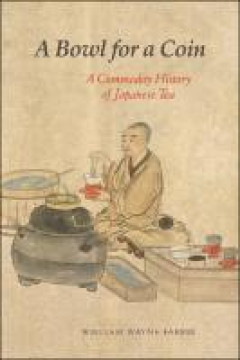
A bowl for a coin :a commodity history of Japanese tea
A Bowl for a Coin is the first book in any language to describe and analyze the history of all Japanese teas. To understand the triumph of the tea plant in Japan, Wayne Farris begins with its cultivation and goes on to describe the myriad ways in which the herb was processed into a palatable beverage. Along the way, he traces the shift in tea's status from exotic gift item from China to its com…
- Edisi
- -
- ISBN/ISSN
- 9780824876609
- Deskripsi Fisik
- x, 227 p. : ill
- Judul Seri
- -
- No. Panggil
- 338.173720952 FAR a
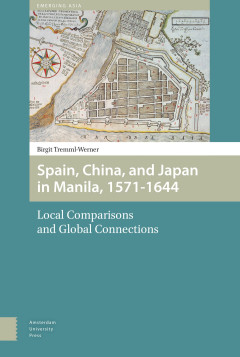
Spain, China and Japan in Manila, 1571-1644 :local comparisons and global con…
This book offers a new perspective on the connected histories of Spain, China, and Japan as they emerged and developed following Manila’s foundation as the capital of the Spanish Philippines in 1571. Examining a wealth of multilingual primary sources, Birgit Tremml-Werner shows that crosscultural encounters not only shaped Manila’s development as a “Eurasian” port city, but also had pro…
- Edisi
- -
- ISBN/ISSN
- 9789048526819
- Deskripsi Fisik
- viii, 365 p.
- Judul Seri
- -
- No. Panggil
- 959.91602 TRE s
 Karya Umum
Karya Umum  Filsafat
Filsafat  Agama
Agama  Ilmu-ilmu Sosial
Ilmu-ilmu Sosial  Bahasa
Bahasa  Ilmu-ilmu Murni
Ilmu-ilmu Murni  Ilmu-ilmu Terapan
Ilmu-ilmu Terapan  Kesenian, Hiburan, dan Olahraga
Kesenian, Hiburan, dan Olahraga  Kesusastraan
Kesusastraan  Geografi dan Sejarah
Geografi dan Sejarah